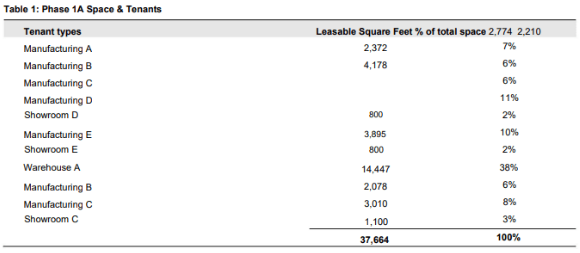NYCEDC Investment Committee Memo Case Study, UO, Singapore The Spofford Juvenile Detention Center was an eyesore for the Hunts Point community in the Bronx
| University | University of Oxford (UO) |
| Subject | NYCEDC Investment Committee Memo |
The Spofford Juvenile Detention Center was an eyesore for the Hunts Point community in the Bronx, NY. It was an intake facility for people under 15 years of age awaiting trial or placement in a larger facility. Over the 54 years it was owned and operated by the Department of Juvenile Justice (DJJ), its foreboding white brick buildings housed an average of 289 young people at a time – 95% of whom were African American or Latino and 54% came from the surrounding low-income neighborhoods.
The Center became infamous for its poor living conditions and for abusing its youth inmates. Dining halls were overrun with rats, windows were barred, hallways were poorly lit, and it was notoriously overcrowded. It was also the site of serious human rights abuses. In 1997, 48 child abuse claims were made against Spofford’s employees. In one case, a counselor was accused of sexually molesting a 15-year-old girl whose hands and feet were shackled. Another counselor was convicted of an attempted assault in the beating of a young boy. Fifty suicide attempts were reported in a single year in the 1980s.
For years, the Hunts Point community and criminal justice advocates had campaigned for the facility’s closure. In 1998, the City shut down Spofford, but due to crowding issues in other facilities, it was soon reopened. Finally, in 2011 the City closed down Spofford for good and the land lay fallow until 2016. The City Council then unanimously voted to approve a mixed-use affordable housing development project called The Peninsula. The project was to be developed in three phases, the first of which (Phase 1A) is the project this case study focuses on.
Hire a Professional Essay & Assignment Writer for completing your Academic Assessments
By phase three, the project would include 740 affordable housing units, 52,000 square feet of public open space, 56,955 square feet of light industrial space, 53,500 square feet for community facilities, and 15,000 square feet of retail space. Phase 1A was a 56,955 gross-square-foot industrial building, of which 37,664 square feet were rentable; it was going to be completed by the end of 2019 and tenants were expected to start their leases in 2020.
“It’s a big day for justice in the Bronx (…) As we move to build more than 700 affordable homes, open space, and small businesses in Hunts Point on the site of the old Spofford facility, we are seeing a community rising and the righting of old wrongs,” Mayor Bill de Blasio said in a statement.
The financing of Phase 1A of the Spofford redevelopment was to be handled by Eric Clement of the New York City Economic Development Corporation (NYCEDC) and the Strategic Investments Group (SIG) – Phase 1A of the project was for the buildout of a light industrial building, which presented many unique advantages compared to other buildings.
Stuck with a lot of homework assignments and feeling stressed ? Take professional academic assistance & Get 100% Plagiarism free papers
As most industrial buildings in NYC are older in nature, they do not have smaller industrial spaces that also offer access to high ceilings, and amenities typically reserved for larger industrial tenants such as a 3-bay loading dock, hydraulic dock lifts, and oversized freight elevators – this is in addition to being a brand- new building. All of these factors combined meant that Phase 1A qualified for class A status, and thus command a 10% higher rent than class B buildings.
The anticipated tenants of Phase 1A (Table 1) were artisanal food production, advanced manufacturing, and industrial lighting companies – the same kinds of tenants NYCEDC dealt with in its many industrial buildings across New York City. “Small, nimble industrial real estate with traditional industrial amenities represent the types of space these smaller companies want,” Eric commented. Thus, within a given class, what would also make a clear difference in terms of rent is building type.

- CH2123 Assignment: Fugacity, VLE Modeling & Applications of Henry’s Law
- BAFI1045 Assignment -Constructing and Evaluating Passive and Active Portfolios Based on the Straits Times Index (STI)
- FIN2210E/FIN2212E Group Assignment: Financial Risk Management Analysis of Bursa Malaysia Companies
- FLM101 Assignment: A Film Analysis: Stylistic Techniques and Their Thematic Importance
- HRM Assignment Answer: Talent Transformation in the Age of AI: Turning Challenges into Opportunities via Ecosystem Innovation
- COMP 1105 Assignment: Health-Focused E-Commerce Website: A Web Technologies Project Using HTML5, CSS, and JavaScript
- Assignment Anwser: Machine Learning in Robo-Advisory Services: Evolution, Applications, and Future Trends
- OMGT2229 Assignment: Quantitative EOQ Analysis, and Strategic Sourcing Decisions for JB Hi-Fi
- Assignment 2 Anwser: Corporate Finance and Planning: An In-Depth Financial Analysis of Company
- BUSM4551 Assignment: The Role of Innovation in Advancing the UN Sustainable Development Goals (SDGs)
UP TO 15 % DISCOUNT

